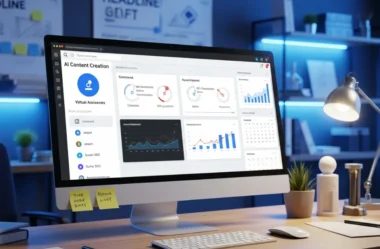Reading time: 7 minutes
Artificial Intelligence (AI) is transforming the way businesses connect with their customers. In marketing, AI offers tools and techniques that enhance customer understanding, campaign performance, and content creation. Whether you’re a beginner or an experienced marketer, understanding how AI works in marketing — and why it’s so impactful — is crucial for staying competitive in the digital era.
What Is Artificial Intelligence in Marketing?
AI in marketing refers to the use of machine learning, natural language processing, data analytics, and automation to make marketing processes smarter and more efficient. These technologies help marketers gather insights, predict outcomes, and deliver personalized experiences to customers.
Rather than replacing marketers, AI enhances their capabilities, allowing for more accurate decisions, faster campaign adjustments, and scalable content generation.
How AI Works in Marketing
AI operates by collecting and analyzing massive amounts of data from various sources — websites, social media, email interactions, customer feedback, and more. Here’s how it works in different areas of marketing:
1. Data Collection and Analysis
AI algorithms process structured and unstructured data to find patterns and trends. This includes:
- Customer behavior (clicks, purchases, time on site)
- Social media sentiment
- Email open and click rates
- Demographic and psychographic data
By analyzing this information, marketers can better understand their audience and create data-driven strategies.
2. Predictive Analytics
Predictive models use historical data to forecast future outcomes. In marketing, this helps:
- Identify leads most likely to convert
- Predict customer churn
- Optimize ad spend based on expected ROI
- Forecast sales and campaign success
Tools like Salesforce Einstein and IBM Watson offer predictive analytics for smarter decision-making.
3. Personalization
AI enables hyper-personalization at scale. It customizes content, offers, and messages for each user based on behavior, interests, and location. Examples include:
- Product recommendations on e-commerce sites
- Personalized email sequences
- Tailored landing pages
This level of personalization boosts engagement and conversion rates.
4. Content Generation
AI can generate text, images, and videos based on user input. Tools like Jasper, Copy.ai, and ChatGPT help marketers create:
- Blog posts
- Ad copy
- Email templates
- Social media content
While human oversight is still important, AI speeds up the creation process and offers inspiration for new ideas.
5. Campaign Automation
AI powers marketing automation tools that handle:
- Email campaign scheduling
- Social media posting
- Customer segmentation
- Lead nurturing workflows
This allows teams to focus on strategy while AI handles the execution.
6. Chatbots and Customer Support
AI-powered chatbots provide real-time customer service, answer questions, and guide users through purchases. They’re available 24/7 and help reduce support costs while improving customer satisfaction.
Popular tools like Drift, Intercom, and Tidio use AI to drive conversational marketing.
7. Visual Recognition and Voice Search
AI also supports visual search (e.g., uploading an image to find similar products) and voice search optimization (e.g., using natural language for queries on smart speakers).
Marketers can use these insights to optimize product listings and content for new search behaviors.
Why You Should Use AI in Your Marketing Strategy
AI brings several key benefits to modern marketers:
- Efficiency: Automates repetitive tasks, saving time and resources
- Accuracy: Reduces guesswork with data-driven decisions
- Speed: Enables real-time optimization of campaigns
- Scalability: Allows small teams to achieve big results
- Personalization: Creates better customer experiences
- Competitiveness: Keeps your brand at the forefront of digital innovation
Companies that invest in AI often see higher ROI, improved customer loyalty, and faster growth.
Real-World Applications of AI in Marketing
Many companies already use AI in their day-to-day operations. For example:
- Netflix uses AI to recommend content tailored to user preferences.
- Amazon leverages AI for product suggestions and supply chain optimization.
- Spotify curates personalized playlists using machine learning algorithms.
- Sephora offers virtual try-on experiences powered by AI and AR technology.
These examples show that AI isn’t just theoretical — it’s already reshaping the marketing landscape.
Common Myths About AI in Marketing
There are some common misconceptions that hold businesses back from adopting AI:
- “AI is only for large corporations.”
In reality, many affordable tools are available for small businesses and solopreneurs. - “AI will replace marketers.”
AI is designed to assist, not replace. It enhances creativity and strategy by handling routine tasks. - “AI is too complex.”
Many tools offer user-friendly interfaces with little to no coding required.
Getting Started with AI in Marketing
To begin integrating AI into your marketing:
- Identify your goals: Are you looking to save time, boost conversions, or better understand your audience?
- Choose the right tools: Start with platforms like Jasper, HubSpot, or Surfer SEO.
- Start small: Implement one feature (like email personalization or chatbot support) and scale gradually.
- Train your team: Ensure your team understands how to use AI tools effectively.
- Analyze results: Use data to measure the impact and make continuous improvements.
Closing Thoughts: Embrace the Future
AI is no longer a futuristic trend — it’s a present-day necessity in digital marketing. It empowers marketers to deliver smarter, faster, and more effective campaigns, transforming how brands connect with customers.
The sooner you adopt AI into your strategy, the better positioned you’ll be for long-term success in a rapidly evolving digital world.
Agora vou gerar a imagem correspondente a esse terceiro artigo. Em seguida, continuo com o quarto da lista.
Perfeito! A seguir, o quarto artigo da lista:
How to Use AI to Create High‑Performing Content
In today’s digital marketing landscape, creating content that captures attention, ranks well in search engines, and resonates with your audience is crucial. Artificial Intelligence (AI) can elevate content creation by making it smarter, faster, and more tailored. Here’s how you can harness AI to produce high-performing content consistently.
1. Start with Data‑Driven Topic Research
AI-powered tools like MarketMuse, BuzzSumo, and AnswerThePublic analyze search trends, competitor content, and user queries to identify high-potential topics. Instead of guessing what your audience wants, let AI guide you with insights grounded in data.
Tips:
- Use keyword-gap analysis to uncover subjects your competitors missed.
- Check trending questions in your niche and create content that addresses them directly.
2. Generate Title and Headline Ideas
Eye-catching headlines are essential. Use AI tools (e.g., Jasper, Copy.ai, Headline Studio) to suggest multiple headline variations. Then, run A/B tests to discover which headline drives the best click-through rate (CTR).
3. Crafting the Content Outline
AI can automate the outline creation process. Tools like MarketMuse can outline the structure of your article based on top-performing pages. A good outline includes:
- An engaging introduction
- Subheadings that match user intent (H2, H3)
- Bullet points or numbered lists for readability
- Conclusion with a clear call to action (CTA)
This structured approach ensures your content is both logical and comprehensive.
4. Write the First Draft with AI
Leverage AI writing assistants such as Jasper, Copy.ai, or ChatGPT to produce a first-draft article. Provide the topic, desired tone, word count, and outline. Though AI can generate high-quality drafts, always:
- Review for factual accuracy
- Infuse your brand voice and insights
- Ensure originality to avoid duplicate content
5. Optimize for SEO
After drafting, use AI SEO tools like Surfer SEO or Clearscope to optimize your content:
- Integrate relevant keywords naturally
- Improve readability (short sentences, active voice)
- Add metadata: title tags, meta descriptions, alt text
- Use internal and external links strategically
6. Polish Language and Tone
Use a tool like Grammarly or Hemingway to refine grammar, tone, clarity, and style. This step ensures your content is polished and professional.
7. Add Visuals and Media
AI-powered design tools like Canva can generate supporting visuals—charts, infographics, social posts. Consider multimedia:
- AI-generated videos with Lumen5 or InVideo
- Voiceovers using tools like Speechelo
- Stock or AI-generated images for visual interest
8. Test and Iterate
Use AI-driven A/B testing platforms (Optimizely, VWO) to compare different headlines, CTAs, layouts, and images. Let data guide what performs best, then iterate to improve.
9. Repurpose and Distribute
Maximize reach by repurposing content for different formats:
- Create video summaries with Lumen5
- Convert articles to social carousels via Canva
- Generate email snippets with Copy.ai or Phrasee
AI helps automate much of this, saving time and expanding your content’s footprint.
10. Monitor and Improve with Analytics
Use AI analytics tools like Google Analytics 4, HubSpot, or Kissmetrics to track engagement, time on page, bounce rate, and conversions. Then feed these insights back into your content process to refine future pieces.




